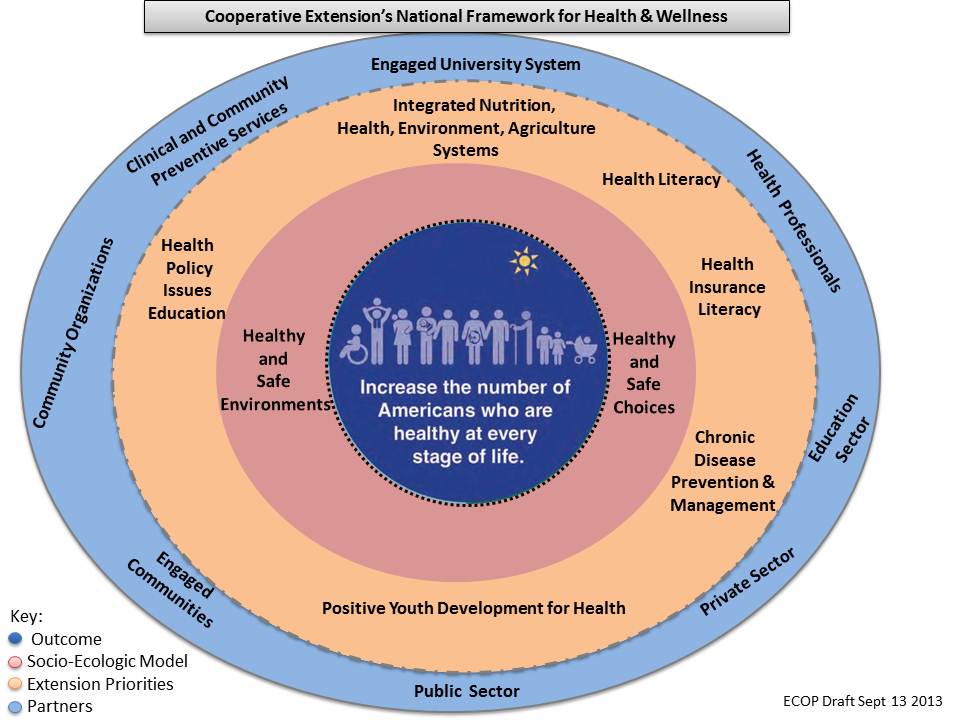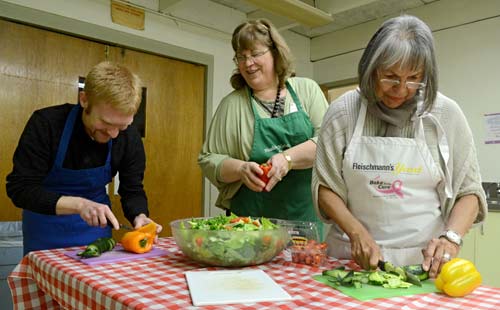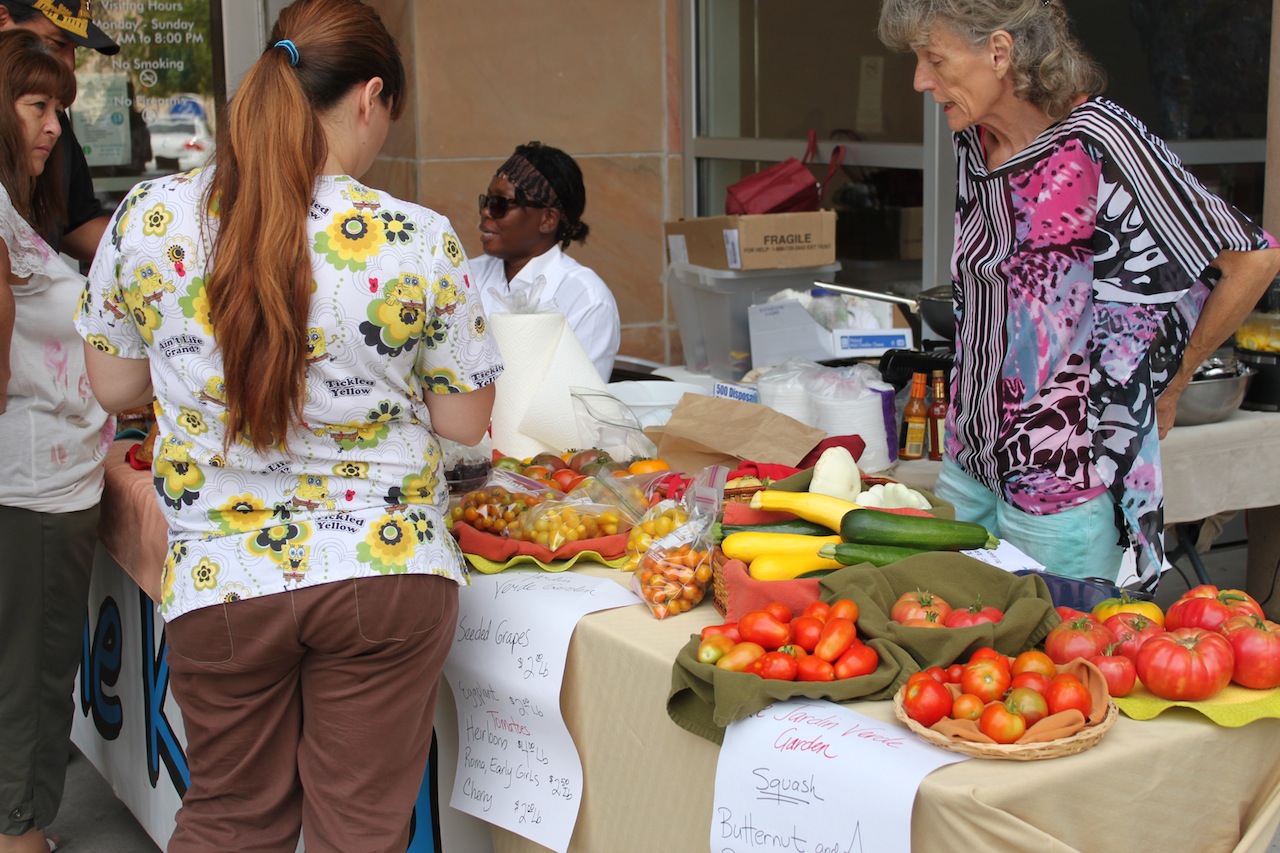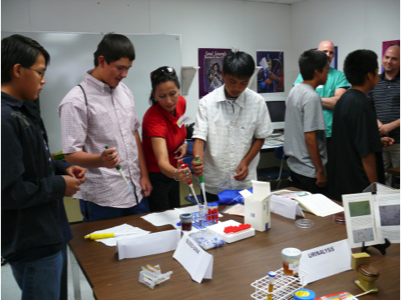
The Cooperative Extension Model

Every state and territory in the U.S. provides Cooperative Extension Services through their land grant university which includes Extension agents who are employed by the university but deployed at the local level, providing a broad range of services to communities. Funding for local Extension agents is provided by a combination of USDA, state and county funds. Campus-based Extension faculty connect the local Extension agents to the latest research in their respective are of service.
Cooperative Extension has historically, and still today, serves as a partner with farmers in applying research-based knowledge to solve agricultural problems. This relationship played a major role in the modernization of farming. Universities have been criticized for “parachuting” into communities and leaving when grants end. However, one of the key components to the success of the Cooperative Extension/Farmer relationship was the trust the farmers had in local Extension Agents who lived in their community and stayed a long time.
National Framework for Health & Wellness
Integrated Nutrition, Health, Environment, and Agricultural Systems –
Intentional collaborative actions to link assets of existing systems to improve health.
Health Literacy –
Health literacy is the ability to get, understand and act upon health information and services.
Health Insurance Literacy –
Health insurance literacy measures the degree to which individuals have the knowledge, ability, and confidence to find and evaluate information about health plans, select the best plan for their own (or their families) financial and health circumstances, and use the plan once enrolled.
Chronic Disease Prevention and Management –
The goals of chronic disease prevention and management are to prevent disease occurrence, delay the onset of disease and disability, lessen the severity of disease, and improve the health – related quality and duration of the individual’s life (adapted from Doll, 1985). Prevention efforts traditionally involve interventions performed before the clinical onset of disease or early in the course of disease, while management efforts may occur later in the disease course and are often focused on reducing the undesired consequences of diseases (adapted from McKenna and Collins, 2010).
Positive Youth Development for Health –
Positive youth development (PYD) focuses on building individual strengths and community supports that prepare young people for learning, work, and life.
Health Policy Issues Education –
Health Policy Issues Education is the educational process of informing and assisting people to improve group decisions about pressing and emerging health issues that affect them and their communities.
These priorities are part of a conceptual framework which guides the health extension for the Cooperative Extension Service:

Examples of Collaboration
ICAN Program
 One of the programs on which Extension Home Economists, Extension Nutrition Educators, and UNM HERO agents have collaborated is the Ideas for Cooking and Nutrition Program (ICAN). This program provides hands-on, needs-based education in the areas of healthy food choices, food preparation, food safety and food resource management.
One of the programs on which Extension Home Economists, Extension Nutrition Educators, and UNM HERO agents have collaborated is the Ideas for Cooking and Nutrition Program (ICAN). This program provides hands-on, needs-based education in the areas of healthy food choices, food preparation, food safety and food resource management.
ICAN is the umbrella name used in New Mexico to refer to both the Expanded Food and Nutrition Education Program (EFNEP) and the Food Stamp Nutrition Education Program (FSNE). The Expanded Food and Nutrition Education Program (EFNEP) was initiated across the nation almost 40 years ago as the response of Cooperative Extension to the plight of those in poverty. It is designed to assist limited resource audiences in acquiring the knowledge, skills, attitudes, and changed behavior necessary for nutritionally sound diets, and to contribute to the personal development and the improvement of the total family diet and nutritional well-being.
In 1996, Cooperative Extension acquired funding through the federal Food Stamp program to implement the Food Stamp Nutrition Education Program (FSNE), which conducts nutrition education with the Food Stamp eligible population of New Mexico. This funding has allowed the ICAN program (which includes EFNEP and FSNE) to expand statewide. The Food Stamp Nutrition Education Program in New Mexico is a continuation of nutrition activities that have been ongoing for almost twelve years. FSNE classes identify locations in each community and county for the delivery of services that are most advantageous for the Food Stamp participants.
In the ICAN program, limited resource individuals meet with a nutrition educator in a group or one-on-one setting. The nutrition educators are paraprofessionals hired from the communities served by the program. These educators have similar backgrounds to program participants and thus serve as peer role models. County Extension faculty members direct the program in each of the individual counties and hire, train, and supervise the nutrition educators.
Adult ICAN participants attend a series of four to twelve classes. Classes are designed based on participants’ needs, and focus on hands-on-learning. Participants learn how to select and make nutritious, tasty foods that are quick to prepare and that make the most of their food dollars and food benefits. Classes for youth consist of approximately four to six classes and also focus on practical skills and hands-on learning. Progress is measured with an evaluation tool that contains information from the participant about behavior before and after the lessons.
The HERO Agent in Bernalillo County, Albuquerque, working with Immigrant Hispanic populations saw a need for the ICAN program. Working in collaboration, the Extension ICAN nutrition educators brought the hands-on learning to the HERO clientele. This win-win situation provided a much-needed program to an underrepresented community populace not being reached prior to HERO and opened new venues for the Extension nutrition educators to deliver educational classes.
Additionally, as the paraprofessionals are limited to the hours they can work per week, the Extension Home Economist provides the HERO senior population programs centered on food safety and personal hygiene.
It’s important to note here that the programs were delivered in Spanish.
Kitchen Creations Program
An estimated 130,000 New Mexicans have diabetes. Diabetes is a chronic disease that can result in serious complications: heart disease, kidney disease, blindness, stroke, amputations and death. The burden of diabetes is felt most heavily by Hispanics and Native American populations found to be approximately two to three times more likely than Anglo-Americans to have diabetes. In the recent past, diabetes was primarily considered a disease of the elderly. This is not the case today. Due to an increase in more sedentary lifestyles, over nutrition, and the number of people who are overweight, type 2 Diabetes is now affecting younger people, including children and adolescents.
Research shows that the risk for complications from diabetes can be decreased when blood glucose levels are maintained within a range that mimics “normal” levels. To achieve this level of control, lifestyle changes usually prescribed for people to manage diabetes include diet modifications. These changes are neither simple to understand nor easy to master. Individuals and families affected by diabetes regularly struggle with understanding complicated diet recommendations and separating them from myths and outdated advice. A national study called the Diabetes Prevention Program study showed that people with pre-diabetes can prevent or delay the development of type 2 Diabetes with a small weight loss and regular exercise.
Diabetes is a major health issue in New Mexico. The Cooperative Extension Service’s mission is to enhance quality of life for New Mexicans. Improving health enhances quality of life. Therefore, Cooperative Extension programming includes addressing this major health issue in New Mexico by providing programs that promote physical activity and healthy eating, and to help persons at risk for diabetes and persons living with diabetes.

Kitchen Creations is a program jointly funded by NMSU Extension and the NM Department of Health (DOH). The program is a hands-on cooking school developed by Cooperative Extension for people with diabetes and their families. The Kitchen Creations curriculum was written to respond to the needs of people with diabetes in New Mexico. Kitchen Creations consists of four classes with each lasting about 3 hours. The classes are taught in teams: the county Extension Home Economist and a Certified Diabetes educator and/or a Registered Dietitian. The educational sessions are provided free to the largely Hispanic, Native American and Anglo citizens that make up the NM population.
A partnership was formed between NMSU Cooperative Extension and the UNM HERO programs when the NM DOH provided funding to the family clinic located in the Albuquerque HERO Agent’s region. The funding was earmarked for diabetes education to the largely Immigrant Hispanic population.
In NM there simply aren’t sufficient numbers of certified diabetes educators within the health care system to counsel diabetic patients. Therefore, the HERO Agent contacted the county Extension Home Economist to provide the Kitchen Creations program. Through a collaborative effort, programs were made available to a population that is often difficult to reach:
NM DOH provided the funding
HERO provided the clientele
Cooperative Extension provided the dietician, the nutrition educator, food supplies and curriculum
[/success]
Partnerships for Health Extension
Working together, Cooperative and Health Extension are offering each other a bi-directional benefit. With only 10-15% of community health being affected by the healthcare system, both are addressing the far more influential “social determinants” of health in their communities. Cooperative Extension is sharing its knowledge and programs in food security, food safety and access to healthy foods. Both are sharing the creation of urban gardens and assisting impoverished rural communities create food pantries and grow fresh fruits and vegetables for local consumption and sale.

With a scarcity of certified diabetes educators to help primary care practices contend with the epidemic of diabetes and need of their patients for nutrition counseling, Cooperative Extension is offering primary care patients nutrition and cooking classes—such a Kitchen Creations. Both are collaborating in increasing the likelihood of youth, especially disadvantaged Hispanic and Native American youth graduating from high school and going on to college through their 4-H youth programs and health professional pipeline programs. And they are preventing domestic violence and improving family relationships through their families and youth programs.




